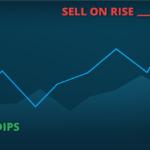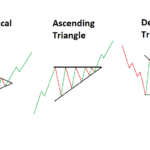The London Interbank Offered Rate (LIBOR) is one of the most important financial benchmarks in the world today for setting interestThe cost of accessing money not owned. rates between banks and – consequently – for clients, retail and institutional.
That is a major reason why its manipulation is still considered in a scandal of endemic proportions that has not yet been resolved.
Why Manipulate Interest?
By manipulating the LIBOR, traders could profit from a specialized form of insider information.
Overall, LIBOR rates are calculated for 15 borrowing periods and 10 currencies, providing huge opportunities for profit for those with an unfair advantage.
The LIBOR is published in London daily every morning at 11:30 Am GMTGreenwich Mean Time (usually equals UTC – Universal Coordinated Time). GMT is a time zone, while U... by Thompson Reuters. It is calculated by the British Bankers Association asking 18 major banks, a relatively complex question, namely “at what rate could you borrow funds, were you to do so by asking for and then accepting inter-bank offers in a reasonable marketA location or entity where people and entities can negotiate and trade assets of value. size just prior to 11 am?”
From there, the highest 4 and lowest 4 responses are discarded. The remaining middle 10 are then averaged, yielding a 23% trimmed mean. The average is then released to the financial press and market.
Libor’s Reach
There are separate LIBOR rates reported for 15 different maturities (length of time to repay a debt) for each of the 10 currencies. The shortest maturity is overnight, the longest is one year.
The LIBOR functions as a set of indexes for financial institutions to set rates for loans, mortgages, credit cards, and many other products. There are also many private contracts that base the interest rate on the LIBOR.
Since 1986, the LIBOR had been fixing the rates for three major currencies: the US Dollar, the Japanese Yen, and the British Pound Sterling. Since then the number of currencies it has fixed the rate for has expanded greatly. At present, the LIBOR rate is set for 10 currencies, now fewer due to those that were absorbed into the Euro.
In addition to the great majority of mortgages in the United States, many derivatives are also based on the LIBOR. Chicago Mercantile Eurodollar Contracts, the world’s most actively traded short term interest rate future contract, used to utilize the LIBOR as its guide.
Interest Rate Swaps, which are used to hedgeTo protect one’s investments against losses by investing simultaneously in a (usually) related ins... positions to protect against fluctuations in the cost of money are also based therein.
Concerns Arise
There had, for some time, been concern that the LIBOR was being manipulated to allow for greater profits for insiders. In 2008, The Wall StreetA street in Lower Manhattan that runs along the original route of the wall surrounding historical Ne... Journal published an article that banks were not reporting accurate borrowing costs for LIBOR calculations.
That was reported to be taking place to enable the banks to appear healthier, which resulted in a host of advantages for those financial institutions. At that time, there was a credit crunch around the world – the Great Recession – so appearing to be more robust presented a tremendous competitive advantage for most banks.
A far greater scandal erupted in 2012, however, when a Financial Times article reported that a traderA merchant who purchases and sells assets or services for profit. In financial markets, the trader b... had admitted that LIBOR had been manipulated since 1991.
By altering the LIBOR, traders would have insider information, resulting in huge profits, based on the wide use of the benchmark.
Aftermath
As a result of the following investigations, not only were financial institutions – primarily Barclay’s Bank – heavily fined and criminal investigations launched around the world, but the oversight of LIBOR was transferred from the British Banking Authority to the Financial Services Authority in the United Kingdom.
In 2014, the New York Stock Exchange’s owner, Euronext, took up the reigns, and soon thereafter, the BBA (British Bankers Association) LIBOR was renamed ICE (Intercontinental Exchange) LIBOR, after the new owners of the NYSE.











